suzhou convert semiconductor co., ltd.-九游会官方网站登录
introduction:
according to the 13th five-year plan, poverty alleviation projects should be actively promoted by building household photovoltaic power generation systems or large photovoltaic power stations at the village level.the market will be launched in 2017, and about 5.3gw will be connected to the network in 2019. according to the latest expected subsidy of 0.08 yuan/kwh, the household consumption index is expected to reach 6gw in 2020.
1.rapid
development of global inverter, three types of market segmentation
differentiation
1.1.
photovoltaic leads the development of inverter, and the industry demand will
reach 200gw in 2025
thanks
to the rapid development of the global photovoltaic market, the demand for
photovoltaic inverters is growing rapidly.according to our estimation,the
demand of photovoltaic inverter will reach more than 100gw, and the
accumulative installed capacity will be more than 500gw by the end of 2019.the
overall measurement logic is as follows:
1)
installation capacity assumption: with the steady increase of new domestic and
global photovoltaic installations, it is expected that the global installation
capacity will reach 200gw in 2025, and the domestic annual installation
capacity will reach 65gw.
2)
capacity ratio hypothesis: in 2012, "gb50797-2012: photovoltaic power
station design specification" pointed out that the proportion of
components and the inverter was designed according to 1:1, the photovoltaic
power station design specification (draft) "points out that the first type
of pv area should not be more than 1.2, the second kind of photovoltaic (pv)
resources area should not be more than 1.4, the third kind of solar resources
area should not be more than 1.8;due to the policy guidance in capacity ratio,
the capacity ratio data in china is slightly lower than that in overseas
markets.according to grassroots research, we know that the domestic pv
installation capacity was 30gw, the inverter usage was about 25gw, and the
capacity ratio was about 1.2.capacity ratio in overseas market was slightly
higher than that in domestic market, which was about 1.3 in 2019.
3) service
life hypothesis: according to grassroots research, the design life of the
inverter is generally 20 years, and the warranty period is usually 5 years. the
inverter basically needs to be replaced once during the 20-year period of the
photovoltaic power station, so we assume the service life of 10 years.
based on the above, we predict that the inverter demand is expected to reach 200gw in 2025.
1.2. the
competition pattern of inverter is deepened, and domestic suppliers break
through the siege
with the development and growth of domestic inverter enterprises such as huawei and sunshine power inverter, siemens, schneider, bosch and abb gradually withdrew from the international market.according to statistics from ihs, from 2016 to 2018, huawei, sunshine and sma occupied the top three positions in global shipments for three consecutive years.huawei and sunshine are leading in the world and their market concentration is constantly improving.


1.3. carve up
the inverter market segment. the hidden champion has different characteristics
photovoltaic
inverters are generally divided into three types: centralized inverters,
cluster inverters and micro-inverters.specifically, the differences in
application scenarios are as follows:
1) centralized
inverter: large ground, water surface, industrial and commercial roof
(500-3400kw), the representative enterprises have domestic huawei, sunshine
power, shangneng electric and other enterprises.
2)
series inverter: small distributed and ground station -- industrial and
commercial roof, complex hill (20-300kw, current maximum 250kw), household
(below 20kw), best control effect;the representative enterprises are mainly
solaredge, jinlang technology, gurui watt, goodway.
3)
micro-inverter: the single capacity is generally less than 1kw, multi-channel
mppt single-unit centralized inverter, the representative enterprises are
enphase, omnick, etc.

2. tracing
back to us inverter company, why it became a super dark horse
2.1.
photovoltaic has become the cheapest energy, and american household is
embracing rapid development
since the itc tax credit policy was first passed in 2006, american photovoltaic industry has maintained steady growth, with an average annual growth rate of 60% from 2008 to 2015.in 2016, influenced by the potential expiration of itc policy, the pv installation capacity surged, reaching 14gw.in 2019, the cost of photovoltaic power in the united states was lower than that of natural gas and thermal power, and the proportion of photovoltaic power in the energy structure will continue to increase. in that year, the installed capacity of photovoltaic power was 11.4 gw, with a total installed capacity of 74gw.
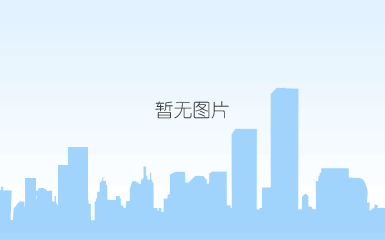
american photovoltaic has become the cheapest energy source.according to data from bloomberg new energy, photovoltaic power plants with tracking systems in the united states have become cheaper than natural gas to generate electricity, making them the cheapest energy source on the market, along with onshore wind power. it is expected that the proportion of photovoltaic in the energy structure of the united states will increase steadily in the future.
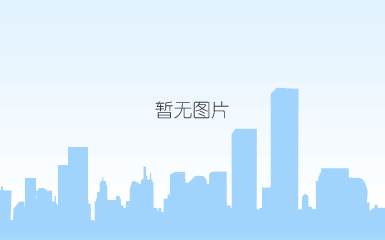
according to the us energy information administration, the electricity price of american residents in 2020 is 12.7 cents per kwh, equivalent to 0.88 yuan per kwh.but american industrial price is only 6.91 cents per kwh, equivalent to 0.48 yuan per kwh.the price of electricity for industry in the united states is about half that of electricity for civil use, which provides an important development opportunity for the development of photovoltaic for household use in the united states.also according to the relevant provisions of the california 2019 building energy efficiency standards on january 1, 2020, california has three floors and below new housing must be installed in photovoltaic system, superposition photovoltaic technology upgrading brings costs down and photovoltaic growth in household in the united states, according to the data of seia in the third quarter of 2019, american households pv installed capacity reached 700 mw, growth 18% from a year earlier.


2.2.
differentiated positioning of household market, focusing on subdivision to
build a moat
in fact, the difference between centralized inverter and household market is the difference between business model 2b and 2c: household end has higher requirements on brand publicity and targeted service of different customer groups, which leads to a lower sales scale per capita than centralized market, and sales may have a better premium.in addition overseas market is a mature market, there are high barriers to entry, strict certification audit, long certification cycle, etc, in the period of rapid development of photovoltaic leading enterprises have not yet launched, but at that time the scale is still small, the intention to develop in the household market at home and abroad enterprises get the opportunity, and with the global scale of household photovoltaic formation since 2018 and rapid development.
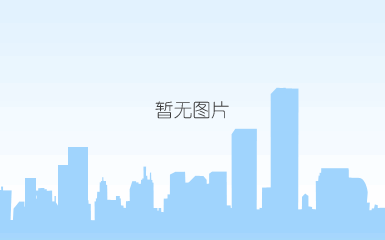

2.2.1.
solaredge: global household inverter "super dark horse"
photovoltaic
inverter "super dark horse".solaredge was founded in delaware in 2006
and listed on nasdaq in 2015. main
products are all types of inverters, uninterruptible power supply and energy
solutions, including residential, commercial and large pv systems, energy
storage system, standby power supply, electric cars or electric steam the
pieces and charge ability, household energy management and other field products,
grid service and the virtual power plants, lithium ion battery and
uninterrupted power supply.
the company's
products are used in more than 130 countries and are sold through integrators
and distributors, following the major global photovoltaic markets.
"focus
on the household binding bibcock globalization" builds a
moat.according to wood mackenzie, solaredge's share of the american domestic pv
inverter market has increased rapidly from 4.5% of 2013 to 60.5% of q3 in
2019.enphase accounts for 19.2% of the market, and the two companies together
account for about 80% of the market in q3 in 2019.the main reasons are:
1)
non-major companies exit from photovoltaic, providing opportunities for
subdivision companies.due to price pressure and input-output efficiency factors
in the market segment, large non-major group companies are prone to exit from
the market segment: bosch exited from the pv inverter market on march 2013,
siemens exited from the pv inverter market on may 2013, and abb exited from the
pv inverter market on july 2019.however, solaredge grasps the photovoltaic
household market and takes the pairing of single-phase inverter and optimizer
as its product competitive advantage.
2) lay out the layout of the usa and the global market, and deeply bind the leading photovoltaic suppliers.the company binds to leading customers such as solarcity and vivint solar, focuses on the american market, and realizes the global layout in the later stage. the specific three stages are as follows:
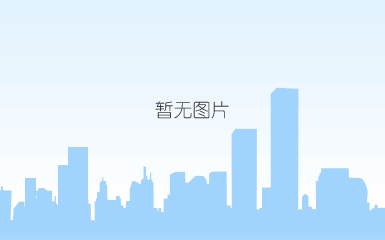
stage
1: strategic gathering of the united states, dark horse performance outbreak.in
2012, the company's largest market was in europe. in order to cope with the
adjustment of electricity price in europe in 2012, the company began to focus
on the american market strategically: the share of solarcity, a household
leader in the united states, surged in 2014, and the vivint solar relay exploded
in 2015.1) the company's inverter shipments increased by 72% year-on-year in
2014, mainly due to the increased contribution of solarcity, among of them,
solarcity's single customer revenue accounted for 5.2%, 19.1% and 24.6%
respectively from 2013 to 2015;2) the company's inverter shipments increased by
143% year on year in 2015, mainly due to vivint solar's announced to use
solaredge optimized inverter on april 2015, and it cooperated with
tesla/solarcity powerword on may of the same year.3) from 2014 to 2016, the
company's revenue accounted for more than 68% in the united states.
stage
2: focus on household pv and increase global contribution.in 2017, the
company's revenue increased by 24% compared with the same period last year,
while the revenue in the u.s. increased by only 4% compared with the same
period last year. the revenue in the u.s. accounted for 58%, down 10% points
from the same period last year.meanwhile, the proportion of revenue in the
united states was 54% and 48% respectively from 2018 to 2019, which maintained
a continuous decline.this shows that the global (non-us) revenue contribution
of the company has been increasing since 2017.
stage 3: american trade barriers make incremental contributions again.on july 2018, the united states 301 tariff imposed 10% tariff on chinese photovoltaic inverters, and the tariff rate was raised to 25% on may 2019. this resulted in a decrease in the proportion of chinese inverters exported to the us from 22.32% to 16.48% in 2018.in addition, huawei announced its withdrawal from the american inverter market on june 2019.from 2018 to 2019 revenue growth in the us region resumed to more than 30% year on year, the american market made incremental contributions again.moreover, global (non-us) revenues were still growing at more than 65% from 2018 to 2019.
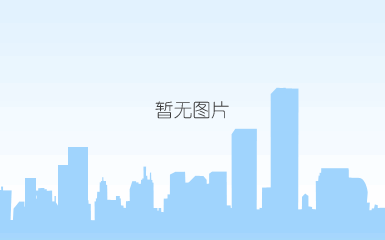

net
profit cagr was 79% from 2017 to 2019.in 2018, the operating revenue was 937.24
million dollars, up 54.39% year on year, and the net profit was 128.05 million
dollars, up 52.13% year on year.in 2019, the revenue was $1425.66 million, up
52.11% year on year, and the net profit was $144.96 million, up 13.21% year on
year.in the fourth quarter of 2019, the revenue was $418.22 million, up 58.61%
year on year, and the net profit was $52.78 million, up 334.4% year on year. revenue growth in 2019 was
due to strong revenue growth in europe, the us and israel;the price of goods
sold in the united states has risen to offset new tariffs on chinese-made
goods.
from
2017 to 2019, the company's gross margin remained above 30%.from 2017 to 2019,
the company's gross profit margins were 35.38%, 34.06% and 33.62% respectively,
with a slight decrease.from the perspective of quarter, the gross profit margin
was 30.23% in q4 of 2018, and the gross profit margin was 34.25% in q4 of
2019.the main reasons for the change in gross margin in 2019 were: due to the
rapid growth of the company and its high dependence on air transportation, the
new tariff rules and the increase of air transportation volume in the united
states increase the transportation and logistics costs;second, the increase in
tariffs on chinese-made products has led to an increase in the cost of sales.
in addition, there are low gross margins on ups products, battery solutions and
smre products, and insufficient utilization of kokam manufacturing facilities.
in 2019,
the revenue of photovoltaic inverter and optimizer accounted for more than
88%. in 2018, inverter revenue was $416.97 million (accounted for 44.49% of
total revenue) and optimizer revenue was $432.41 million (accounted for 46.14%
of total revenue).in 2019, the inverter revenue was $626.45 million
(accounted for 43.94% of the total revenue), and the optimizer revenue was
$634.01 million (accounted for 44.47% of the total revenue). the company
focuses on household photovoltaic inverter and optimizer products.
the
inverter shipments reached 5.62gw in 2019, with a year-on-year growth of
43.35%.in 2018, the ac inverter shipments reached 3.92gw, with a year-on-year
growth of 59.24%, and the power optimizer shipments reached 11351.68 million,
with a year-on-year growth of 54.07%.in 2019, the ac inverter shipments reached
5.62gw, with a year-on-year growth of 43.35%, and the power optimizer shipments
reached 15801.38 million, with a year-on-year growth of 39.20%.
in the future, we will continue to expand production capacity in vietnam and europe.the company's main base is in guangzhou, china (opened in 2011), but there is almost no sales in china, mainly because of the high unit prices and the price-sensitive chinese market.in the future, the company will continue to expand production in vietnam and hungary, and the company will open a new factory in vietnam in q3 of 2019, which is expected to reach production in q2 of 2020.

2.2.2.
enphase: u.s. household micro-inverter leader
enphase
energy, founded in 2006, is headquartered in fremont, calif., and specializes
in designing, developing and selling home energy solutions for the u.s. and
international photovoltaic industries.the company's main products are
photovoltaic micro-inverters, which can convert direct current electricity from
photovoltaic panels (dc) into grid-compatible alternating current (ac) for use
or export. currently, the company mainly enters the residential and commercial
markets in north america, europe and australia.
strategic
binds sunrun/sunpower, inverter shipments increased 121% year on year in
2019.sunrun and sunpower are the top two installers of household pv in the
united states (as of 2019h1). with the promotion of the two major customers,
the company's market share of household pv inverter in the united states
continues to increase.
1)
cooperated with sunrun twice and deeply bound major customers.after first cooperating with sunrun on
modular power electronics systems in 2015, the company cooperated with sunrun
again at the end of 2019. enphase will provide sunrun with its seventh
generation iq microinverters, the company's iq7 series microinverters with
unique software defined architecture and semiconductor integration that will
benefit downstream users.in addition, the company will form strategic partnerships
with lg, panasonic, solaria, and grid alternatives.
2) acquire sunpower
inverter and become the exclusive supplier. on august 2018, the company acquire sunpower microinverters for a mix of cash and shares, paying $25
million in cash and 7.5 million shares in shares. upon completion of the
acquisition enphase will become the exclusive supplier of sunpower
microinverters.
the
company made its first profit in 2019.in 2019, enphase
realized revenue of $624 million, up 97.47% year on year, and its first net
profit of $161 million, up 1485.64% year on year.the
significant increase in revenue is mainly due to the large number of users in
europe and the united states and the increase in average selling price.1) the price increase is mainly due to the value increase
which brought by the performance improvement of the latest generation of iq7
micro-inverter. the target sales price of the product will be raised from 35
dollars/unit to 51 dollars/unit; 2) the rapid
sales growth is mainly attributed to the withdrawal of huawei from the us
market, which alleviates the pressure on enphase. the iq7 micro-inverter is
very popular in the north american and european markets, and the sales volume
of the company's micro-inverter has increased from 2.8 million units in 2018 to
6.2 million units in 2019.
the
company's gross profit rate increased year by year from 2017 to 2019.the company's gross margin increased from 19.58% in 2017 to 35.44%
in 2019, mainly due to the gradual growth of the company's operating revenue
and continuous control of operating costs after the restructuring and
integration with technological transformation as the core in recent years.the company's net interest rate rose from -15.79% in 2017 to
25.81% in 2019.in 2019, product sales
increased significantly and net interest rate turned negative to positive for
the first time.
focus on the u.s. market.benefiting from the rapid development of household photovoltaic in the united states, the revenue in the united states in 2019 was 524 million dollars, accounting for 83.86% of the revenue, and the revenue in the overseas market was 101 million dollars, accounting for 16.14% of the revenue.according to wood mackenzie, enphase has a 19.2% market share in residential pv inverter market of the us in q3 of 2019.
3. domestic
distributed market force, inverter stealth champion
3.1. increased
the contribution of distributed photovoltaic, household type and industry and
commerce fly together
in
2009, china launched the "golden sun" project and the photovoltaic
building demonstration project, explicitly subsidized distributed photovoltaic
power generation projects.the 12th five-year plan
refered to the combination of centralized development and decentralized
utilization, so as to realize the common development of centralized
development, decentralized development and distributed utilization.during the 13th five-year plan period, it was further
clarified that distributed photovoltaic and photovoltaic comprehensive
utilization projects should be promoted comprehensively.under the incentive of related policies, distributed
photovoltaic in china showed a trend of rapid growth.the installed
capacity of distributed pv in 2019 was 12.2gw, accounting for 40% of the newly
increased installed capacity.based on the
advantages of distributed access to the power side, we believe that the future
distribution is expected to continue to grow.
household distributed market: according to the 13th five-year plan, actively promoted photovoltaic poverty alleviation projects, and built household photovoltaic power generation systems or large photovoltaic power stations at the village level.the market was launched in 2017, and about 5.3gw were connected to the network in 2019. according to the latest expected subsidy of 0.08 yuan/kwh, the household consumption index is expected to reach 6gw in 2020.
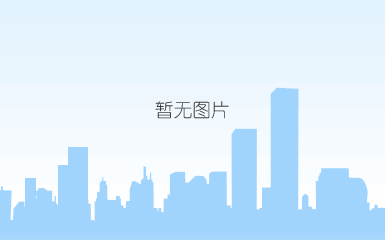
industrial and commercial distributed markets: industrial and commercial enterprise itself power consumption is larger, the distributed power cost is about 1 yuan/kwh (lateral commercial power parity), without considering the financing into this case, according to the industrial and commercial roof installation 1 mw photovoltaic power station, according to 3.5 yuan/w investment cost calculation, total investment is 3.5 million yuan, assuming that send electricity 1200 h per year, computing power about 1.2 million degrees, the case of spontaneous self-used higher percentage ,you will pay back your investment in about 3-4 years.the high rate of return on investment in industry and commerce is expected to further stimulate the development of distributed industry and commerce in the future.

3.2. standard
us household inverter, search for "tomorrow stars" at home and abroad
with the rapid development of the domestic photovoltaic market, the inverter business of domestic inverter enterprises such as huawei and sunshine power has been developed and grown stronger. with the development of the distributed market, enterprises such as jinlang technology, goodwe and guriwat, which are positioned in the subdivision field, have expanded gradually.

3.2.1. jinlang
technology
established in
2005 and listed on the shenzhen stock exchange in 2019, jinlang technology is
mainly engaged in the research and development, production, sales and service
of grid-connected photovoltaic inverters, grid-connected wind inverters and
distributed wind power generating units.
the company's
products are concentrated in the inverter below 100kw, mainly three phase and
single phase 4g series inverter, applied to small and medium-sized industrial
and commercial distributed, residential and community distributed power
generation system.
from
2017 to 2019, the company's revenue cagr reached 58%.in
2018, due to the domestic 531 policy, the growth rate of market fluctuations
slowed down. according to the performance report in 2019, the company's annual
revenue reached 1.123 billion yuan in 2019, up 35% year on year, mainly
benefiting from the outbreak of overseas markets.in
2019, the company's net profit was 125 million yuan, an increase of 6.3% year
on year, mainly due to the company's increased investment in the overseas
market and the increase in overseas service fees, publicity fees and product
certification fees.
deep
ploughing group series inverter, become the domestic subdivision leader.in terms of subdivision power, small series inverter accounts
for a high proportion. in 2018, the company's revenue of series inverter less
than 20kw (mainly for household use and bipv) was 520 million yuan, accounting
for 73%.the revenue of 0-5kw inverter
was 250 million yuan, and the revenue of 5-20kw inverter was 270 million yuan.according to the export data of solarzoom, among the export
market of inverters under 5kw in 2019h1, jinlang technology accounted for 26%,
ahead of sunshine and goodway, and was the leader in the market segment.
open the global layout, open the growth space.the company actively develops major markets in the united kingdom, the netherlands, australia, mexico and india.in 2019, thanks to the steady development of overseas distributed market, the company achieved revenue of 275 million yuan in overseas market in the first half of the year, accounting for 70% of the total.according to data from zhixin consulting, the company's export volume ranked fourth in the industry in 2019.
3.2.2. sunshine
power
founded
in 1997 and listed on the shenzhen stock exchange in 2011, sunshine power is a
high-tech enterprise focusing on the research and development, production,
sales and service of new energy power equipment and system solutions such as
solar energy, wind energy, energy storage and electric vehicles.the inverter
business covers a power range of 3 ~ 6800kw, fully meets the requirements of
various types of photovoltaic modules and grid connection, and operates stably
and efficiently in a variety of natural environments such as high temperature,
high altitude, wind and sand, salt spray, low temperature, etc. the products
are widely used in more than 60 countries and regions such as germany, italy
and the united states.
the
company's revenue scale keeps growing.according to the
2019 performance bulletin, the company's revenue reached 13.5 billion yuan in
2019, with a year-on-year growth of 30.25%.the company made
a net profit of 891 million yuan to the parent company, up 10.09% year on year.
specifically, the number of new domestic photovoltaic installations in 2019
decreased significantly year on year, the company's domestic business was
affected to a certain extent, and the demand of overseas market increased. the company actively increased the expansion
of overseas business, overseas performance has achieved greater growth,
maintained a continuous growth in business scale.
the company's profitability remains stable.the company's gross profit marginwas maintained at 24%-27% from 2013 to q3 of 2019 . in 2018, influenced by the 531 event, the price of photovoltaic inverter dropped significantly, and the gross profit margin of that year declined. from q1 to q3 of 2019,the gross profit margin and net profit margin of were basically the same as that in 2018.
3.2.3 goodwe
founded in
2010, goodwe is a high-tech enterprise integrating independent research and
development, production, sales and service, which is based on the conversion,
energy storage transformation and energy management of new energy power supply
equipment, with the core of reducing electricity cost and improving electricity
efficiency, and the purpose of energy multi-energy complementarity and energy
value creation.
as one
of the main inverter manufacturers in china, the company mainly produces series
inverter with power ranging from 0.7kw to 80kw, which can meet the needs of
household, poverty alleviation and industrial and commercial power stations.at present, the company's products are based in china, and
has been exported to germany, italy, australia and other more than 80 countries
and regions.
focus
on distributed market segments, and continue to expand overseas markets.the proportion of the company's overseas revenue increased
from 20.80% in 2016 to 64.45% in 2019h1, mainly sold to germany, the netherlands,
the united kingdom, india, australia, brazil, mexico and other countries.
cooperate
with krannich solar to open up overseas distribution channels.on march 4, 2020, the company signed a european strategic
cooperation agreement with krannich solar, a leading global distributor of
photovoltaic systems integration.this further
speeds up goodwe's global market expansion.
the
company's profitability is stable, with a recovery in 2019.the company's gross profit margin remained at 33%-39% from
2016 to 2019h1 . in 2019, the gross profit margin of photovoltaic inverter
increased slightly, mainly due to the increased proportion of sales in overseas
markets, and the average selling price was slightly higher than that in china
due to the difference in market pricing mechanism.